Imagine yourself returning from a day of exploring to a local home in the Vietnamese countryside. Friendly dogs and little children come out to greet you. A meal made with just-picked herbs and vegetables is cooking in the kitchen. There’s time to refresh yourself and relax in the hammock before joining everyone around the table for a delicious Vietnamese dinner.
Welcome to Vietnam’s homestays, where warm hospitality, tasty food and lovely locations are the norm. The experience of living with a local family for a few days is something every traveller to Vietnam should try. You’ll find many types of homestays across the country, from mountain lodges to riverside homes. Here are five things to look forward to during your stay.
Local hospitality
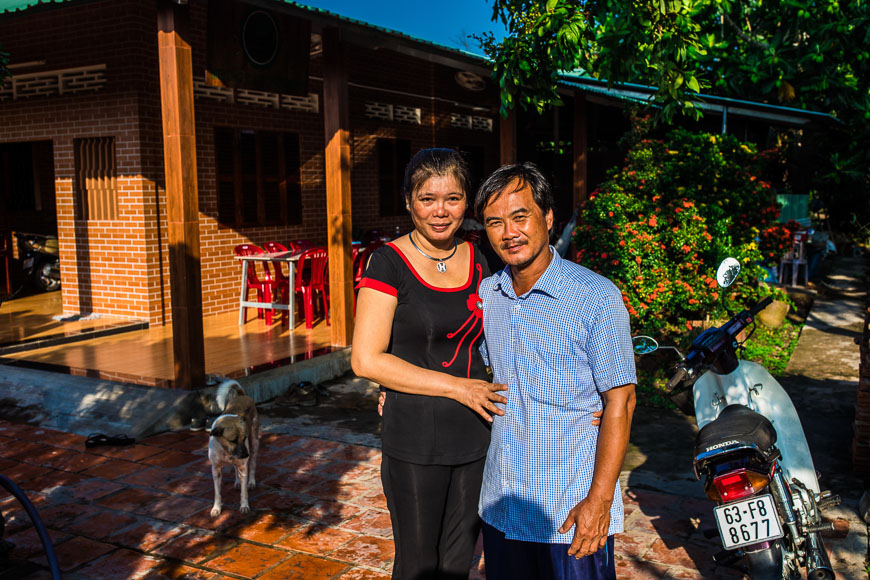
It’s safe to say the real highlight of a Vietnamese homestay is the people you’ll meet. Not only are Vietnamese cheerful and hardworking, but they also treat their guests with genuine care and attention. Your homestay host wants nothing more than for you to relax, explore, eat well and enjoy yourself. Don’t be surprised if you’re offered a free footbath, an array of fresh fruits, or motorbike rides around town — it’s our way of showing hospitality.
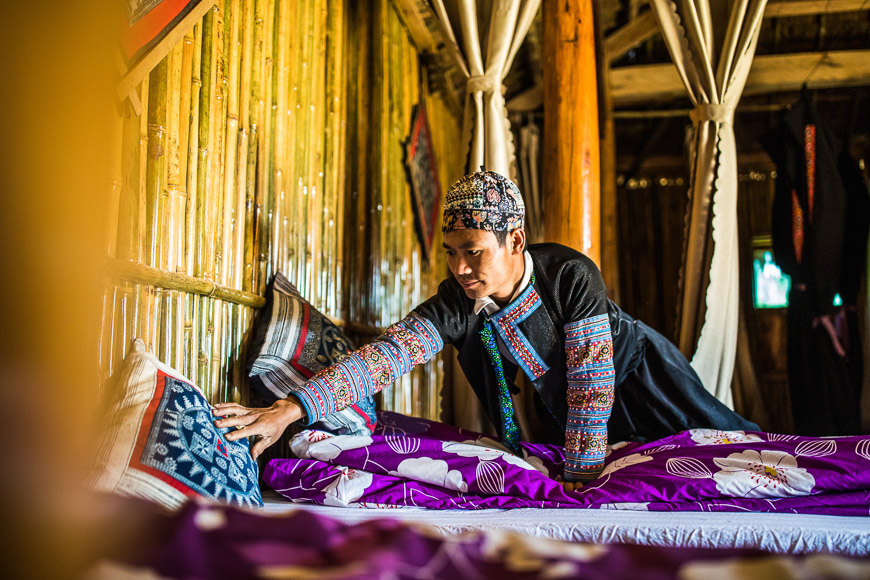
During your time at the homestay, you’ll have the chance to see local life up close. Talk to the host family and find out how things are done the Vietnamese way. You may strike up a conversation with a teenager, make friends with the grandmother who cooks your breakfast, or enjoy your host’s hidden talents, such as flute-playing or folk singing. These authentic moments make travel worthwhile.
READ MORE: Vietnamese etiquette for travellers
Unique accommodation
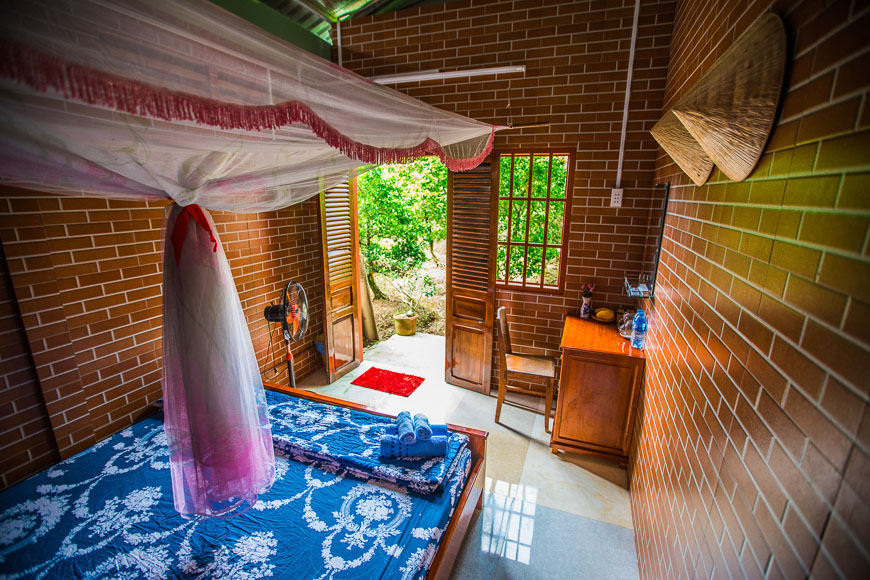
While Vietnam has its share of five-star hotels, nothing beats the one-of-a-kind experience you get in a real home. Each homestay is different, and you may be surprised by the many choices here. In the surreal watery landscapes of Ninh Bình, you can stay in a bamboo hut in the shadow of ancient limestone karsts. In mountainous areas such as Sapa and Mai Châu you can sleep in rustic wooden lodges and longhouses. In the Mekong Delta, simple brick homestays are surrounded by canals, fronds and fruit farms. You’ll also find homestays in Vietnam’s cities — a great opportunity to explore sidewalk culture and urban Vietnam.
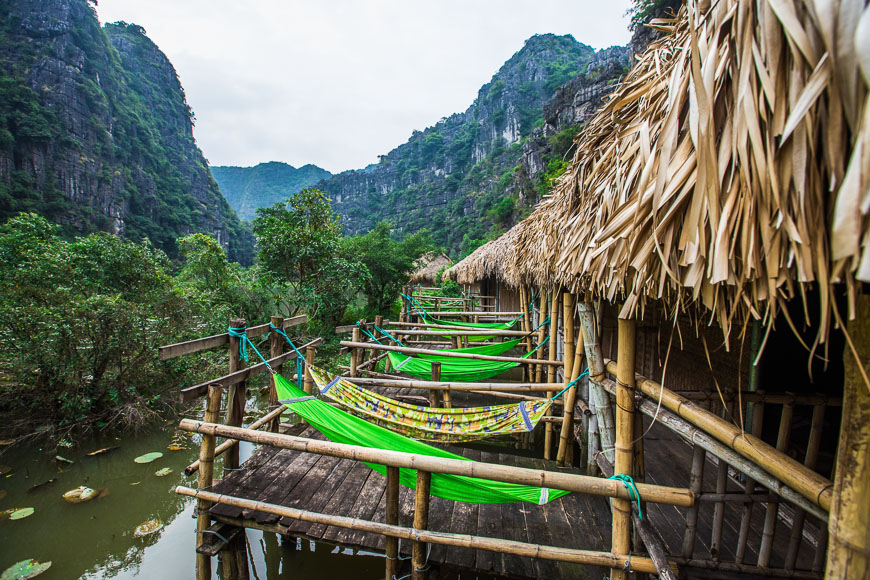
TIP: If you’re booking a homestay in the countryside, look for one with an amazing view. Many homestays in Vietnam claim breathtaking locations on the edge of rice paddies, beaches, and nature reserves.
Home-cooked meals
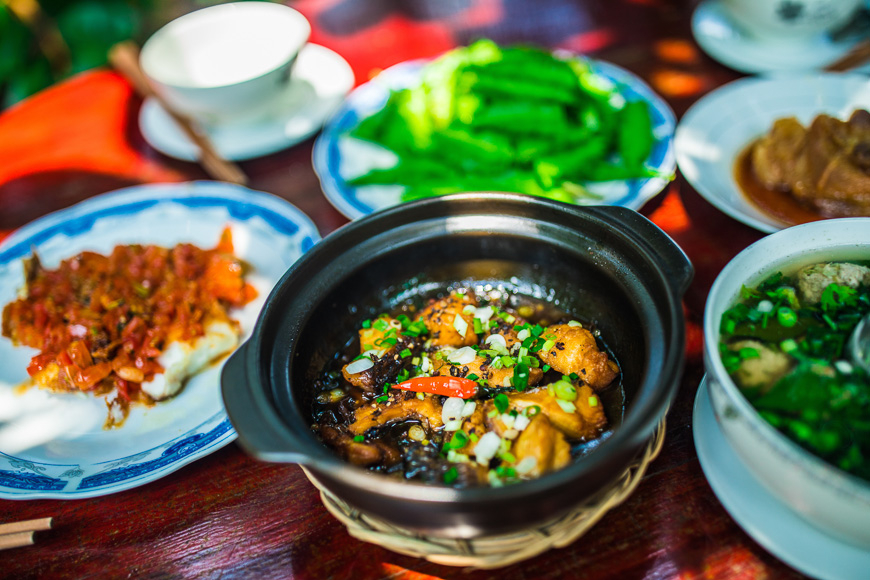
If meeting new people is the best part of the homestay experience, the food is a close second. Vietnamese homestays are famous for serving up fabulous, fresh and delicious cooking three times a day (or more!) You can expect your host to work with the local produce to create unique regional dishes. Fruit is another favourite item Vietnamese love to eat and share with travellers. A plate of fruit with green tea is a common snack all around the country.
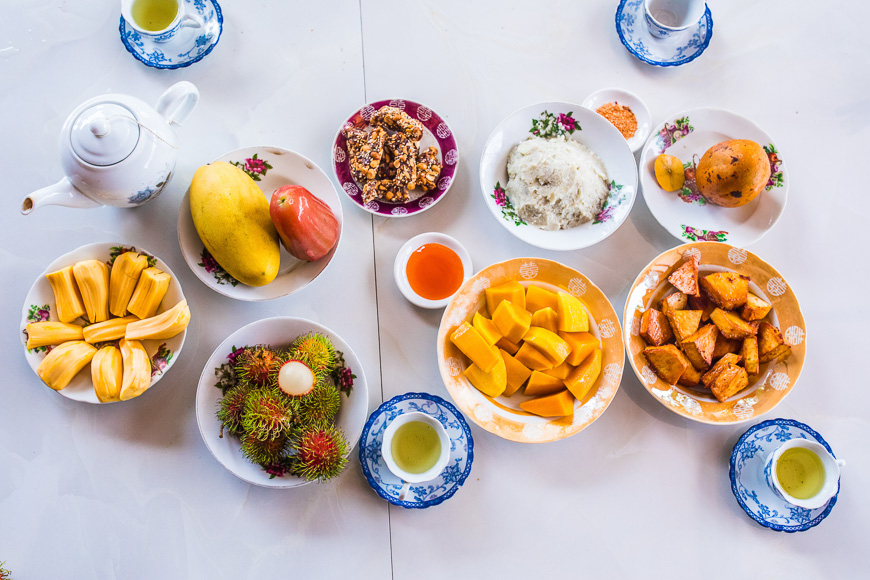
In most homestays, you aren’t given a menu: you simply eat what’s prepared. But don’t worry — it’s always good (of course you can tell your host if you have dietary preferences.) Breakfast might be a bowl of rice noodles in savoury broth, or a crunch Bánh Mì with eggs and hot coffee. Lunch might involve simple wraps, with shrimp, tofu, herbs, lettuce and cucumber rolled in rice paper and dipped in fish sauce. Dinner is usually a large meal with a variety of vegetables, seafood and meat dishes, always served family-style with fluffy steamed rice. Enjoy!
READ MORE: 21 must-try dishes in Vietnam
Unforgettable tours
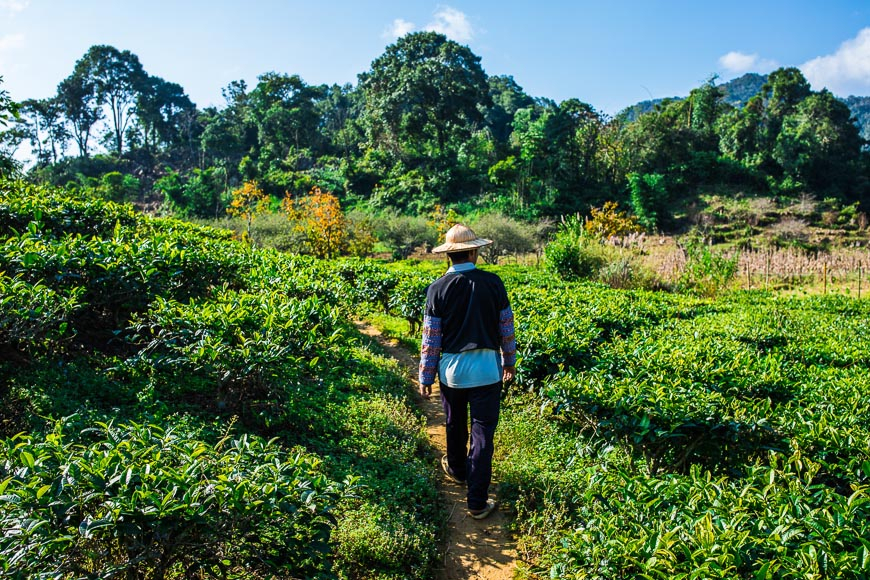
Do you love a good adventure? Vietnam’s homestays present the perfect opportunity for in-depth exploring. Your host not only knows all the secret spots in the area, he or she can tell you just how to plan your excursion to see them at the best time. In Vietnam, homestay hosts will often lead guests on walks around their villages and hamlets — an inside guide if there ever was one.
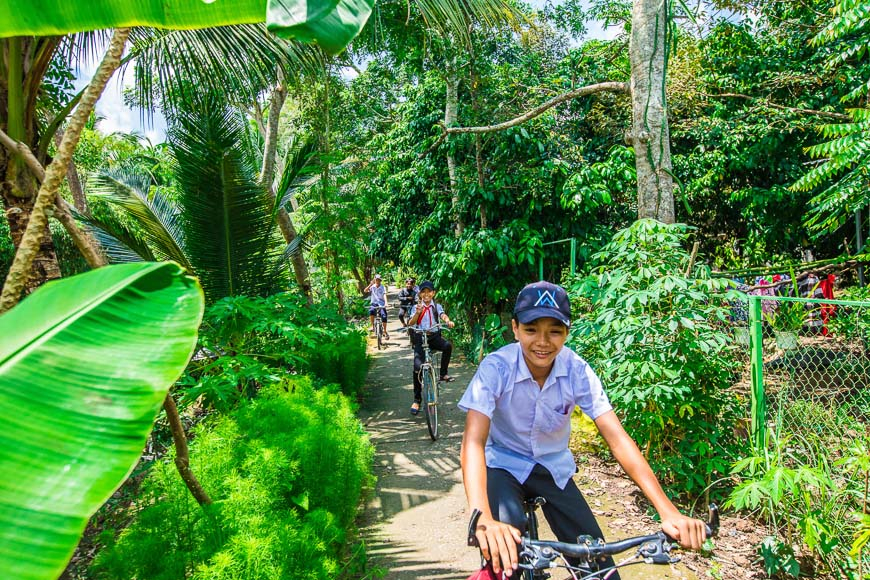
Apart from checking out the locale, you can ask your host about the best attractions and daytrips in the surrounding area. Chances are your host can furnish you with a bicycle and a map of where to go, or they can arrange for a smiling boatman (or boatwoman) to take you on a personalised cruise. They may show you the best hiking trails, or set you up with a motorbike driver and guide. By following your these recommendations, you’re sure to have amazing tours that are different from the rest.
TIP: Some homestays have set up tours and workshops that contribute to the income of the whole village. These community-based tours are a great way to give back to the local economy during your holiday.
Value for money
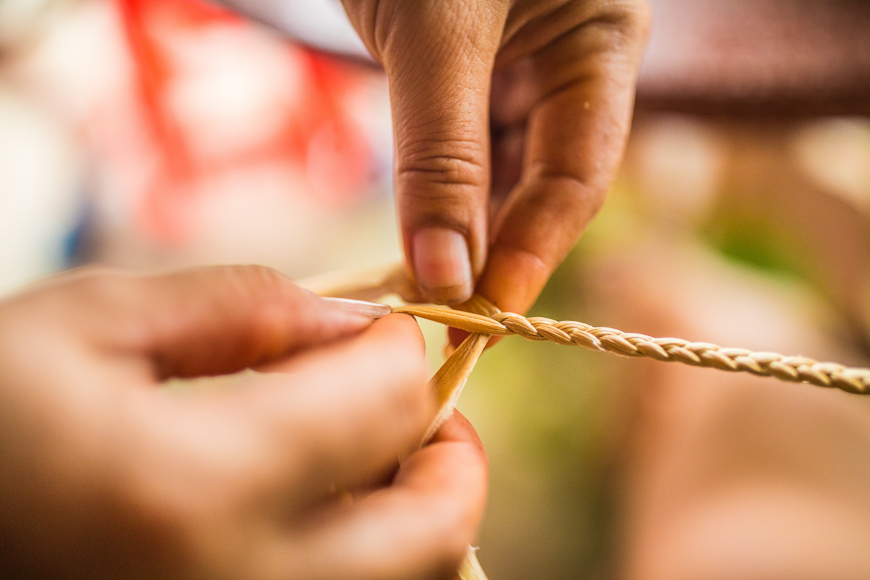
Whether you’re travelling on a budget or have enough to splurge, no one can deny that Vietnam’s homestays are amazing value for money. You may be surprised at the level of comfort and service you can get for just 10 USD to 15 USD a night. Because Vietnamese homestay hosts are so generous, you’re sure to receive more than your money’s worth. You’ll find homestays with separate rooms and some with shared rooms, but either way you should feel perfectly safe and at the same time, immersed in the destination.
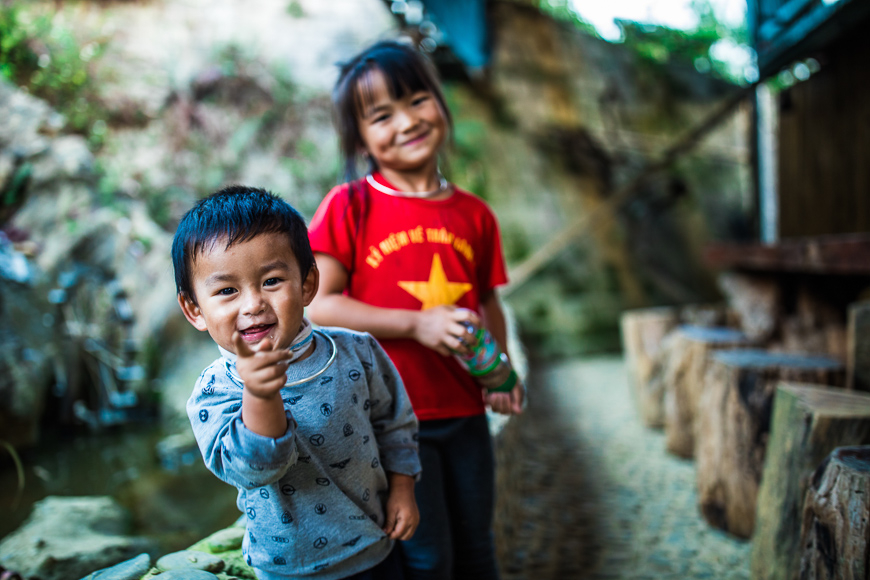
The best homestays in Vietnam are always clean and comfortable, with fresh bedding, shared baths, and areas for guests to relax out of doors. Many homestays feature unique ethnic designs and textiles, as well as refreshing views of nature, right from your window. Tropical fruits, invitations to tea and rice wine, generous meals and genuine smiles are some ways Vietnamese will try to make you feel welcome. Chances are you’ll have such a good time, you’ll want to come back again and again.
TIP: A few major hotels in Vietnam also offer homestay experiences in the countryside. Victoria Sapa Resort and Spa has a homestay experience available to guests, welcoming them to sleep under the stars in a H’mong home perched atop a tiered rice paddy field. Mai Chau Lodge can also accommodate a local stay, taking visitors deep into the mountains of Hoa Binh for tranquil hikes and scrumptious delicacies.



